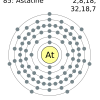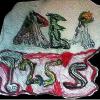I wanted to make a little summary of compounds that I´ve found and I will add some further ones by time.
Be aware that HDAC or epigenetic alteration isnt allways good.
I believe to read ( but really not sure) somewhere that a inhibition of a certain HDAC is actually increasing the chance for dementia or something like that.
So try not to handle this that easily, but with caution.
E.g. find allways first something that can reverse the effects before using something
and try to get as much as possible informed.
Here´s no Doctor who advises You !
The first study really catched my eyes, but I dont know whether they can act in the CNS.
Note the effects of e.g. Ginger on Table 2.
It opposes actually some actions of HDAC inhibitors, but those particular upregulations could be good for cocaine addiction.
Zyflamend, a polyherbal mixture, down regulates class I and class II histone deacetylases and increases p21 levels in castrate-resistant prostate cancer cells
Zyflamend down-regulated the expression of all class I and II histone deacetylases where Chinese goldthread and baikal skullcap (two of its components) appear to be primarily responsible for these results.
http://www.biomedcen...1472-6882/14/68
http://www.biomedcen.../14/68/table/T2
miRNA are relative new discoveries that have a great influence on Epigenetics.
Cocaine exerts neuronal adaptions partly via miRNA modulation
Example:
Modulation by Cocaine of Dopamine Receptors through miRNA-133b in Zebrafish Embryos
http://www.plosone.o...al.pone.0052701
Via miR-133b cocaine would modulate the expression of pitx3 and subsequently of dopamine receptors, dat and th. These results indicate that miRNAs can play an important role during embryogenesis and in drug addiction.
Curcumin has also some influence on miRNA:
..Recently, Sun et al. (2008) reported that curcumin altered miRNA expression in human pancreatic cancer cells. After 72 h of incubation, 11 miRNAs were significantly up-regulated and 18 were down-regulated by curcumin. Among these, miRNA-22 was the most significantly up-regulated and miRNA-199a* the most down-regulated.
Effect of curcumin on miRNA expression...
perhaps on Methylation too:
Only a few reports have so far investigated the effect of curcumin on DNA methylation. Molecular docking of the interaction between curcumin and DNMT1 suggested that curcumin covalently blocks the catalytic thiolate of DNMT1 to exert its inhibitory effect on DNA methylation (Liu et al. 2009). However, a more recent study showed no curcumin-dependent demethylation, which suggested that curcumin has little or no pharmacologically relevant activity as a DNMT inhibitor (Medina-Franco et al. 2010). To clarify these contradictions, more research is urgently needed.
Epigenetic changes induced by curcumin and other natural compounds
http://www.ncbi.nlm....les/PMC3092901/
http://www.ncbi.nlm....port=objectonly
VS
Curcumin as a regulator of epigenetic events
http://www.google.de....80185997,d.ZWU
Nicotinamide wich is supposedly a SIRT 1&2 inhibitor
Mechanistic studies on the effects of nicotinamide on megakaryocytic polyploidization and the roles of NAD+ levels and SIRT inhibition.
http://www.ncbi.nlm....pubmed/19715739
This hydrolysis yields O-acetyl-ADP-ribose, the deacetylated substrate and nicotinamide, itself an inhibitor of sirtuin activity.
http://www.biovision...etric-5706.html
Edited by Flex, 20 November 2014 - 08:02 PM.

















































